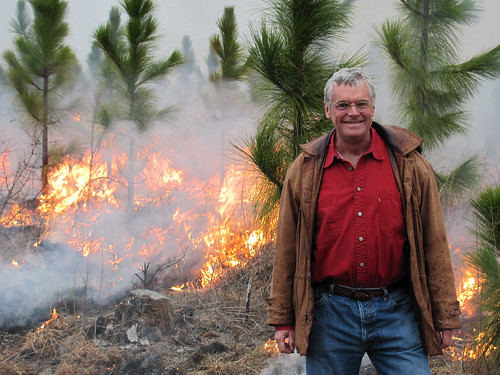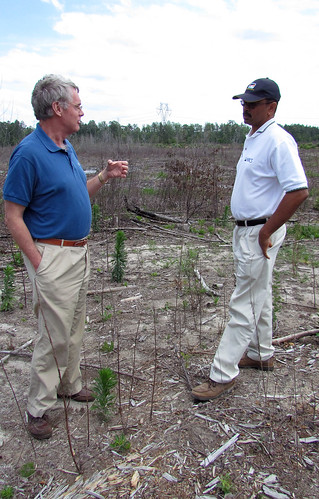Like the mythical phoenix, the very real longleaf pine is rising from the ashes of near-extinction to reclaim its native range in Virginia with the help of committed partners and landowners like Bill Owen.
A musician by profession, Owen is a conservationist at heart who still lives in the family home in Yale, Va. By working with a team of six agencies, including USDA’s Natural Resources Conservation Service, he hopes to realize his dream of planting 1,000 contiguous acres of longleaf pine in his lifetime.

Longleaf pine forests once covered approximately 1 million acres in Virginia south of the James River, stretching southward through nine states. But by 2007, only about 2,000 of the trees were left in the entire state, on less than 400 acres. This decline can be attributed to many factors, including the clearing of land for early settlement and the harvesting of trees for turpentine, pitch and pine tar used in shipbuilding.
With assistance from NRCS through its Longleaf Pine Initiative (LLPI), Owen has already planted just over 300 acres of this formerly abundant tree in Sussex County and 100 acres in Surry County. These new stands help to restore the rich longleaf ecosystem, which is home to at least 122 endangered or threatened plant and animal species across the Southeast, including the fox squirrel, northern bobwhite, red-cockaded woodpecker and gopher tortoise.
Longleaf pine is a fire-dependent ecosystem, and controlled burning is preferred for the trees to thrive. The Virginia Departments of Forestry (VDOF), Conservation and Recreation and Game and Inland Fisheries have stepped in to assist with controlled burns on Owen’s plantings. VDOF has also assisted with aerial herbicide applications and funding through its Pine Bark Beetle Prevention Program.

Owen has a vision for the future of longleaf pine. In 2007, he worked with The Nature Conservancy to place 1,400 acres of his property in a conservation easement. The easement allows Owen to retain ownership of the land while protecting it from future development. The Nature Conservancy helps manage this protected land, which forms the core of the Raccoon Creek Pinelands Conservation Area, one of Virginia’s premier longleaf pine restoration sites.
“I just think longleaf pines are magnificent trees,” says the 57-year-old church and choral music director. “They’re like the Sequoias of the East Coast, living up to 400 years or more, and are at the very center of a complex ecosystem which we are trying to re-establish.”
Find out more information about NRCS’ Healthy Forest Reserve Program
Check out more conservation stories on the USDA blog
Follow NRCS on Twitter
